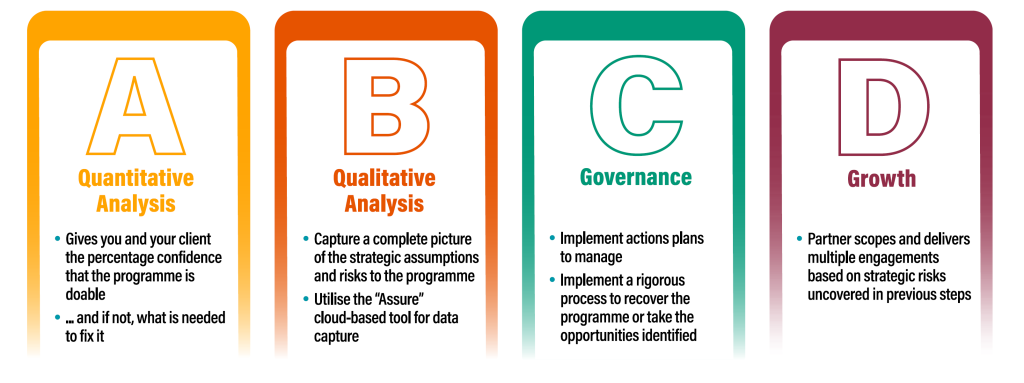The formal approach your clients are employing to understand project risk may not guarantee project success
Chances are most of your client’s project management frameworks include some form of risk management process for any significant project. After all, if the project matters, the PMO, legal team, risk or compliance team will have ensured that risk consideration and mitigation is added to the equation.
Usually, these traditional approaches to project risk management are based on identifying risks, perhaps through some form of workshop, adding impact and probability ratings, either qualitatively or quantitatively, and then multiplying these together to come up with a risk exposure which allows prioritisation and action.
It all sounds good in theory but in practice, there are likely to be significant problems with this approach.
This is due to the psychology behind the language of risk. Projects are all about achieving objectives by set timescales, i.e. positive ventures. Yet risk is a negative entity so to get people to think and talk openly about their risks can be a challenge.
For example, when you ask a project manager, “what are your risks?”, this can have two primary effects:
- The project manager’s brain is thinking positively and is suddenly asked a question that is pushing in completely the opposite direction. The effect is to “confuse” the brain so that it starts thinking about things that might go wrong but are not linked to the objectives of the project. The effect can be to generate spurious risks which are not linked to the project objectives, e.g. a plane might crash on the building!
- The project manager immediately starts to think things like “what are we going to do with this information?” and may feel threatened that their fears may be shared with colleagues and superiors making them feel vulnerable. The effect will be that they share the risks they are comfortable about managing and not the ones that are their real concerns.
This psychological barrier can significantly compromise risk identification and therefore will undermine the whole risk management process.
A risk approach that understands the psychology and turns it on its head.
De-RISK’s SDA methodology directly addresses the weakness seen in traditional risk management processes. By focussing on the assumptions and communicating these rather than the risks, you identify the real risks to your projects quickly and efficiently. By then managing these risks you will have the confidence that your projects will deliver on-time, to budget and meet their critical objectives.
SDA works by:
- Focussing on assumptions which allow people to think positively (what needs to happen?), rather than negatively (what may go wrong?). This means people tend to communicate their assumptions more openly than their risks.
- Allowing you to build plans that consist of facts and assumptions but with a lot more of the latter than the former. SDA captures the key assumptions that knit the plans together, along with assumptions made about external constraints and interdependencies, so that a complete and consistent analysis of the risks is more easily conducted.
- Recognising that assumptions are naturally future focussed – you cannot make assumptions about things that have already happened and therefore the focus stays on risks rather than issues.
- Working on the root cause of any risk which lies in the underlying assumption(s). If we can deal with the root-cause rather than the impact, we can normally fix things easier and cheaper at source rather than spending a small fortune clearing up the mess. This leads to short, sharp action plans that tend to get done!
What Strategic Delivery Assurance brings our strategic alliance partners

For more information: https://www.de-risk.com/strategic-partners/

